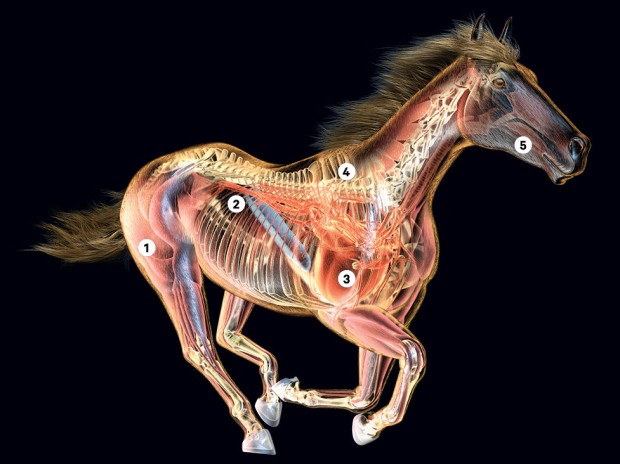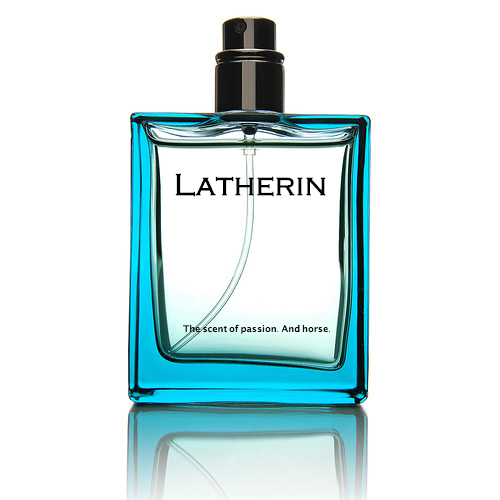As Secretariat approached the turn for home, still picking up speed, Belmont Park race announcer Chic Anderson uttered the most memorable and perfectly accurate line in racing history: “He is moving like a tremendous machine!”
That is exactly what was happening that day at Belmont Park in 1973. A perfectly built racehorse with all systems go; each component superiorly crafted and finely tuned, working in mechanical harmony to produce as dominant a performance as you will ever see.
We all know thoroughbreds are specially built for speed and stamina, but what exactly makes them unique? What exactly is under the hood? Wired Magazine (of all places) had a look, pointing out 5 key components that give thoroughbreds the ability to “convert air into blazing speed.” Let’s explore…

(Bryan Christie Design)
1. Slow twitch muscles. They burn oxygen more efficiently giving thoroughbreds great MPG. Thoroughbreds have twice as many of these muscles than Quarter horses, and its a big reason why they can successfully transition to other disciplines later in life.
2. Spleen. When the going gets tough, the spleen kicks in, churning out an additional 12 liters of blood and greatly boosting oxygen levels.
3. Big Hearts. Simply put, the bigger the heart the more blood that’s pumped to the muscles. It’s not uncommon for some thoroughbreds to have a heart twice the normal size. It’s referred to as the “large heart gene” that travels on the x-chromosome. Secretariat famously possessed the gene, and his heart is estimated to have weighed over 20 pounds.
4. Latherin. Ah, the scent of a horse. As flight animals, horses must sweat in order to dissipate heat when exercising, much like humans. Unlike humans, equine sweat is a protein-based, detergent-like fluid that facilitates the cooling process. It is also produced by salivary glands, giving off that welcoming “foaming at the mouth” vibe.

5. Respiratory Tract. Air intake fuels this whole process. The upper respiratory tract is one of the first things you evaluate when considering a thoroughbred’s potential (or any sport horse, for that matter), and is constantly monitored throughout a career. If a racehorse has a narrow tract or is prone to inflammation, they won’t be able to take in enough air to power the engine.
And that’s what makes the thoroughbred one of nature’s fastest, strongest and grittiest animals.




 April 4, 2016
April 4, 2016 






















